OpenAI's GPT-Image-1 API: A Developer's Guide to Leveraging Advanced Image Generation Technology
OpenAI Officially Launches GPT-Image-1 API: A Major Breakthrough in AI Image Generation Technology
OpenAI has officially launched its new GPT-Image-1 model via API, making advanced, high-quality image generation capabilities accessible to developers and businesses for integration into their own tools and platforms. This release builds upon the significant popularity of image generation initially introduced in ChatGPT, which attracted over 130 million users who created more than 700 million images within the first week.
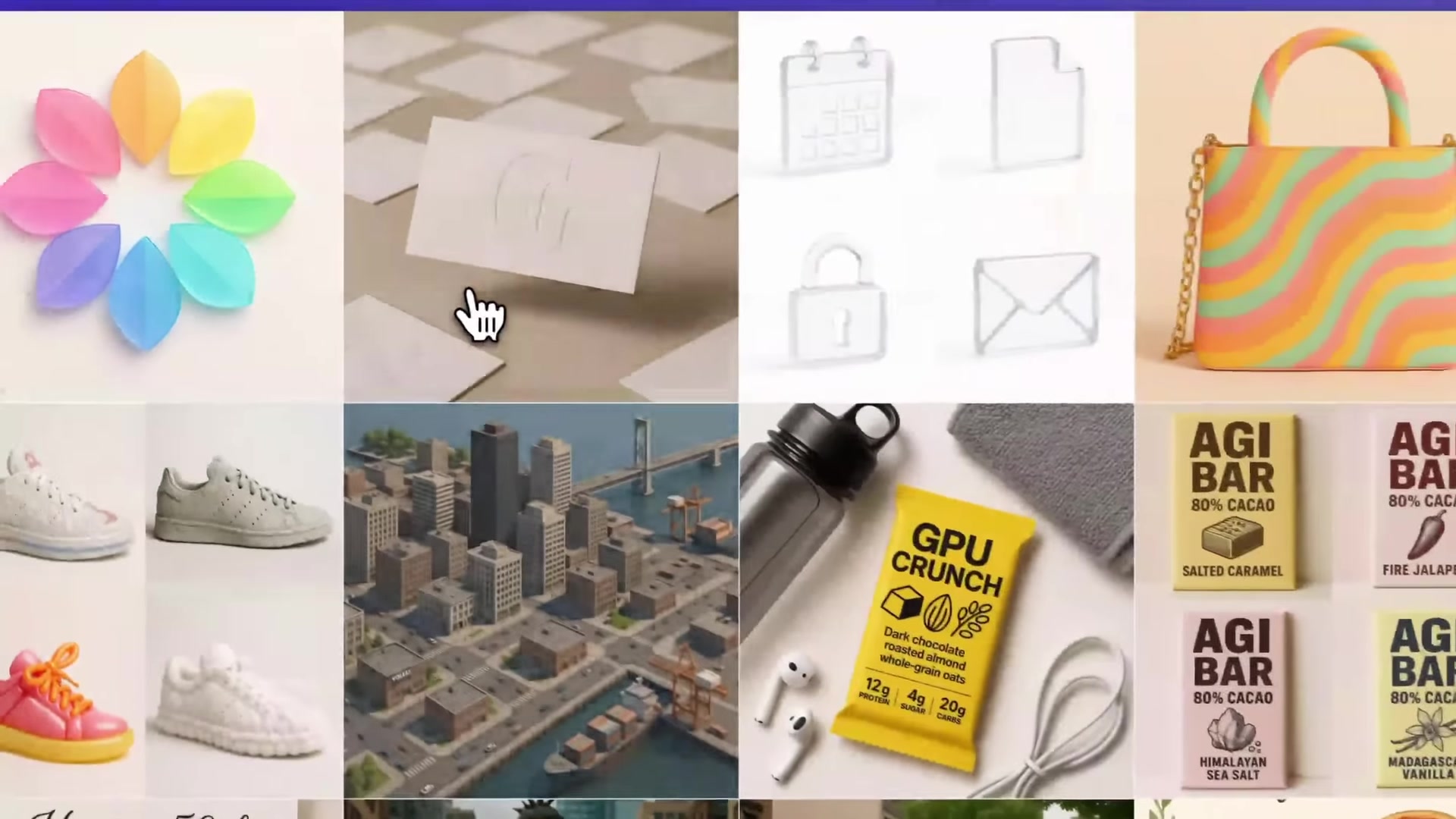
The core idea is to empower developers and businesses to incorporate this sophisticated image creation technology directly into their products and services, moving beyond the confines of the ChatGPT interface. This API provides the tools to generate compelling visuals programmatically.
Access, Safety, and Pricing: Key Considerations for Using the API
Accessing the GPT-Image-1 model via the API is open to any developer tier within OpenAI's platform, however, it necessitates identity verification before use. OpenAI has implemented safety guardrails similar to those used for the GPT-4o model in ChatGPT. These include safeguards against generating harmful content and the inclusion of C2PA metadata in generated images. Developers also have control over moderation sensitivity through parameters, allowing them to choose between standard filtering ('auto' default) or less restrictive filtering ('low'). Importantly, OpenAI emphasizes that they do not train their models on customer API data or any image inputs and outputs submitted through the API, ensuring user privacy and data control.
The pricing structure for the GPT-Image-1 API is based on token consumption, with separate rates for text and image data. Text input tokens (prompt text) cost $5 per million tokens, while image input tokens (using images as input) cost $10 per million tokens. The generated image output is priced at $40 per million tokens. In practical terms, OpenAI estimates this translates to roughly $0.02 for a low-quality square image, $0.07 for medium-quality, and $0.19 for a high-quality square image, although costs vary based on image dimensions and quality settings.
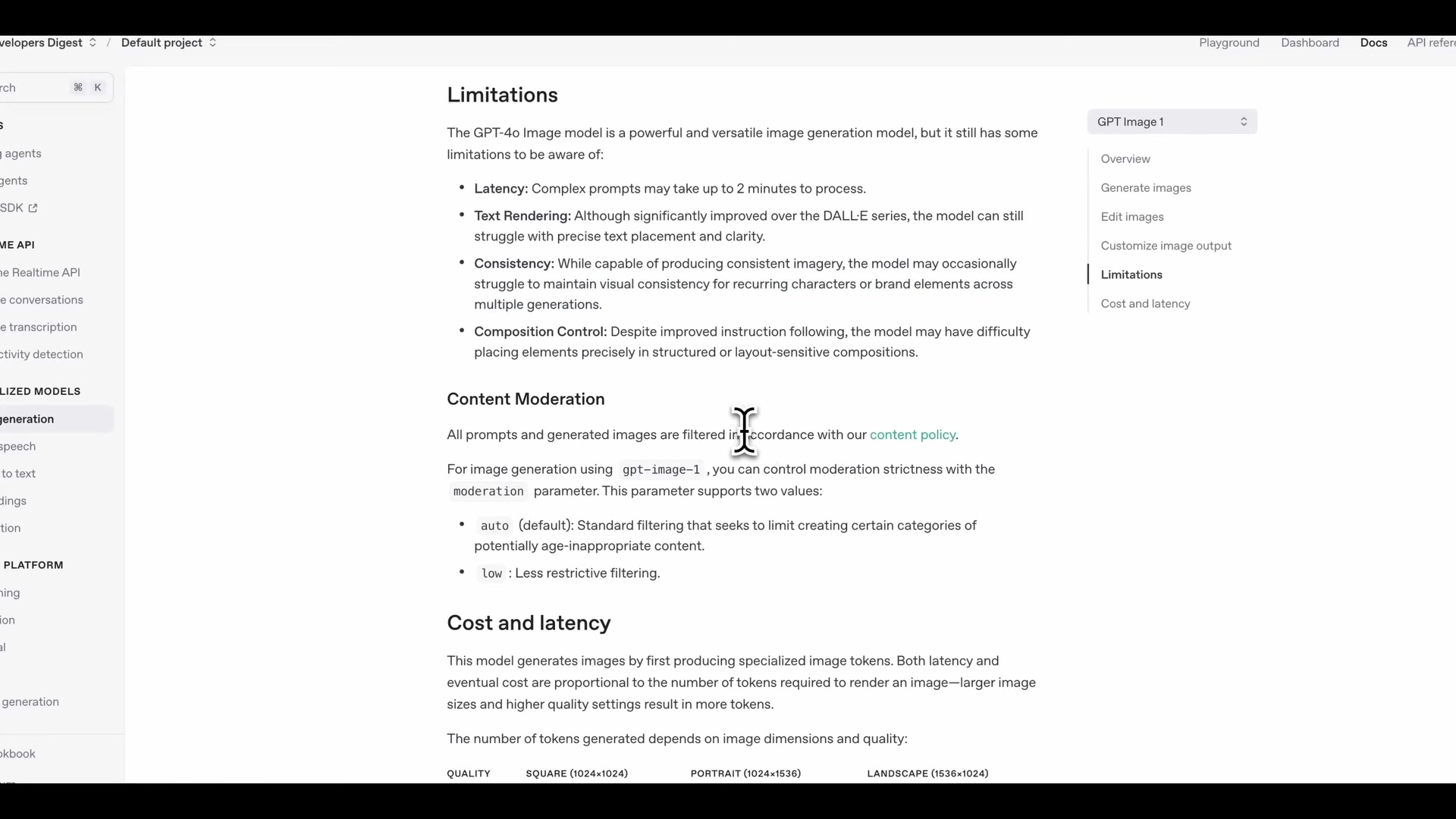
Developers planning to utilize the API must factor in the initial identity validation step, understand the available safety configurations, and carefully consider the token-based pricing model relative to their expected usage and desired image quality.
Exploring Capabilities: Playground Demo and Inpainting Features
Once identity validation is complete, developers can experiment with the GPT-Image-1 model directly within the OpenAI Playground environment. This interface provides a hands-on way to test the model's capabilities without writing code initially. The Playground showcases a variety of pre-built examples, demonstrating potential use cases like creating business cards, designing logos, generating concert tickets, or visualizing interior designs.
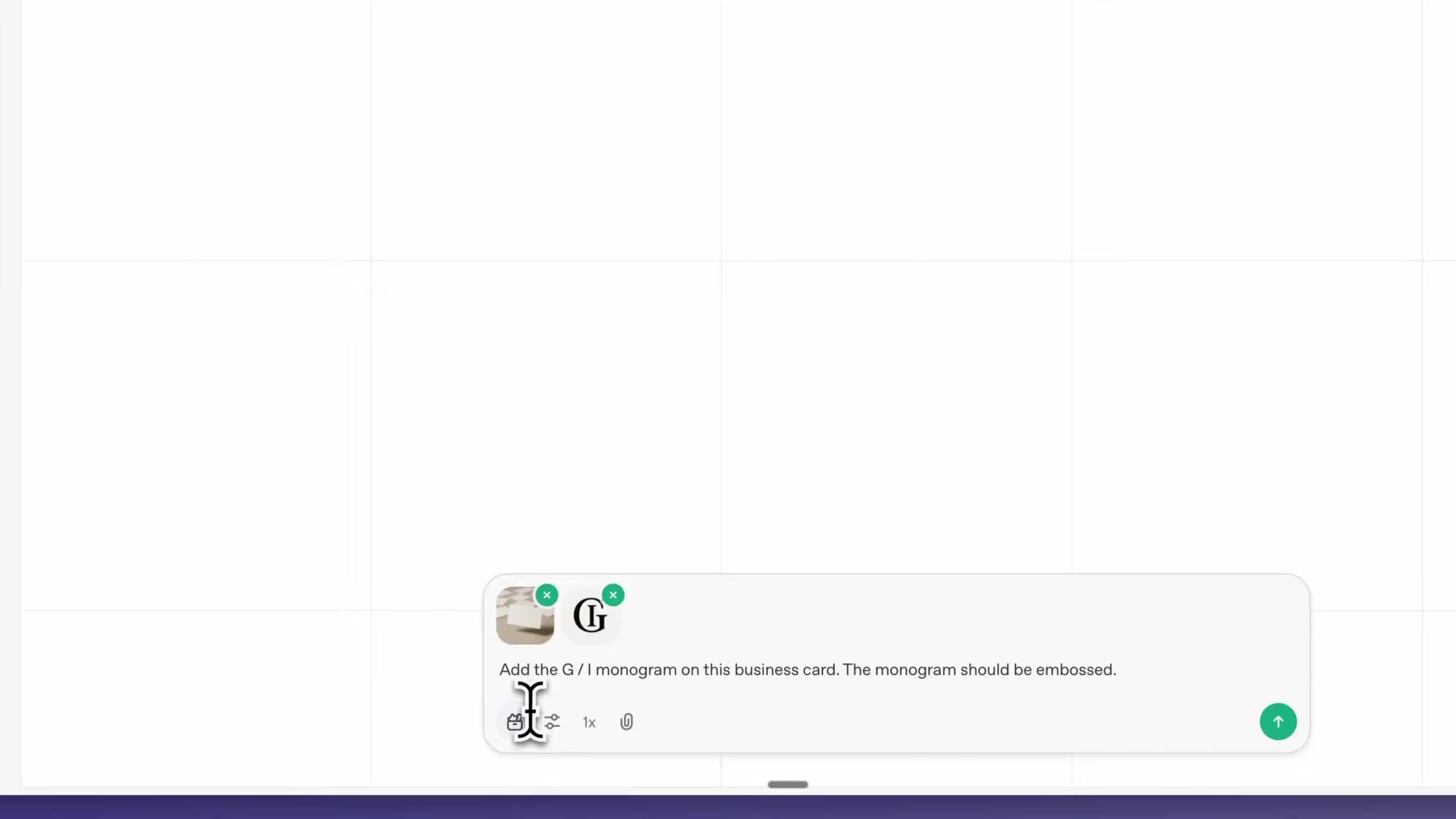
Within the Playground, users can easily adjust parameters such as the desired aspect ratio (square, portrait, or landscape), the rendering quality (low, medium, or high), and the number of image variations to generate from a single prompt. It's crucial to remember that even though it's a testing environment, using the Playground still consumes API tokens and incurs costs based on the pricing structure.

A particularly powerful feature highlighted is inpainting. This allows users to upload an existing image along with a corresponding mask image. The mask indicates specific areas within the original image that should be modified or replaced by the AI. This enables iterative refinement of generated images, allowing for targeted adjustments rather than regenerating the entire image from scratch.
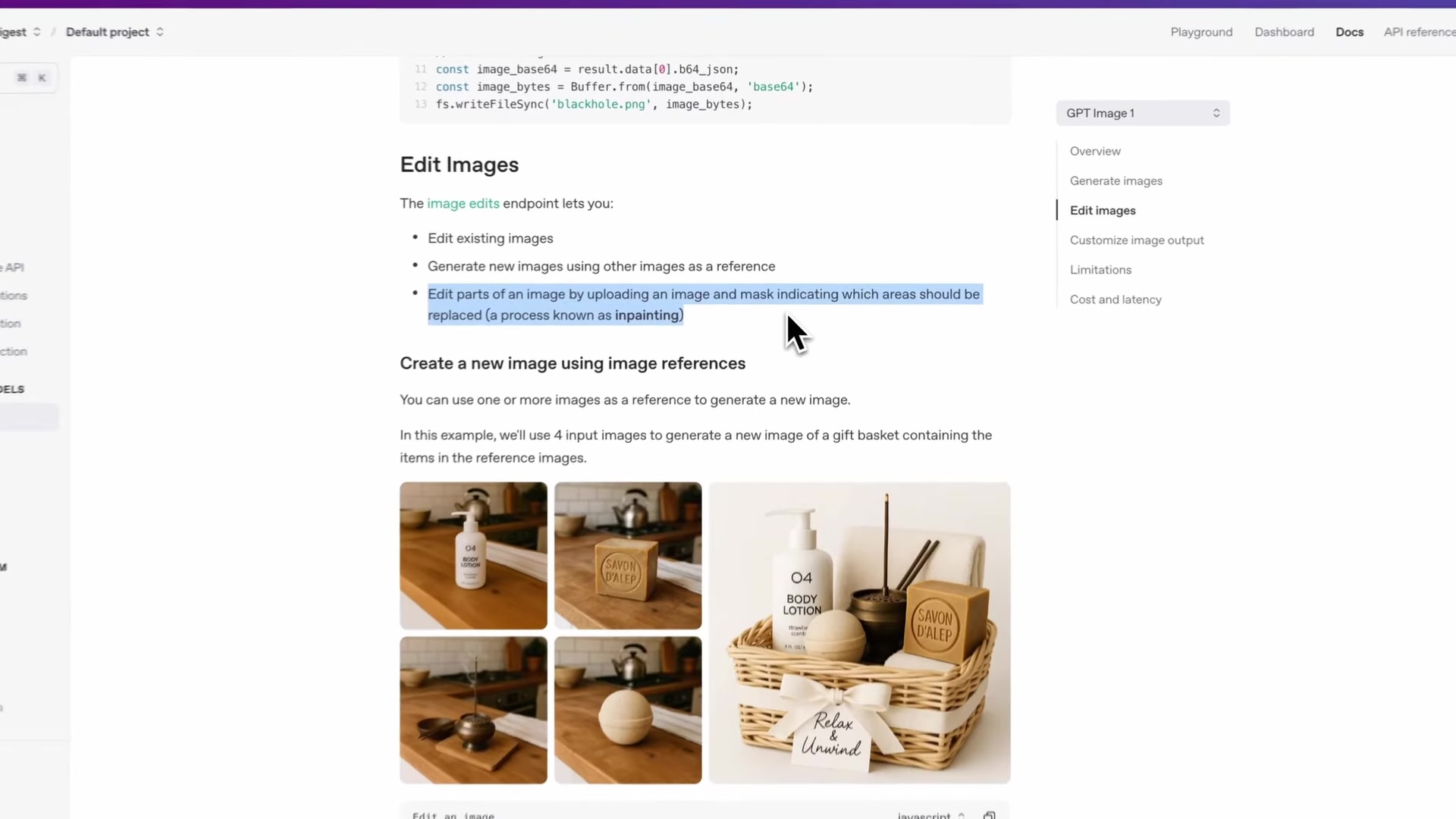
The Playground serves as an excellent starting point for understanding the model's potential, while the inpainting feature offers advanced control for detailed image editing and refinement.
Technical Specifications and Limitations
Setting up API requests for GPT-Image-1 is designed to be straightforward, typically involving the use of OpenAI's official SDKs. A basic image generation request requires specifying the 'gpt-image-1' model and providing a text prompt. Beyond simple generation, the API supports more complex operations like editing existing images or generating new images based on reference images. The inpainting feature, specifically, has technical requirements: the image and mask must be the same format and size (less than 25MB), and the mask image must contain an alpha channel to define the editable areas.
The API offers flexibility in customizing the output. Developers can specify the desired output format (PNG is the default, but JPEG and WebP are also supported), control the compression level for JPEG and WebP formats (0-100%), and request images with transparent backgrounds. Transparency is supported for PNG and WebP outputs.
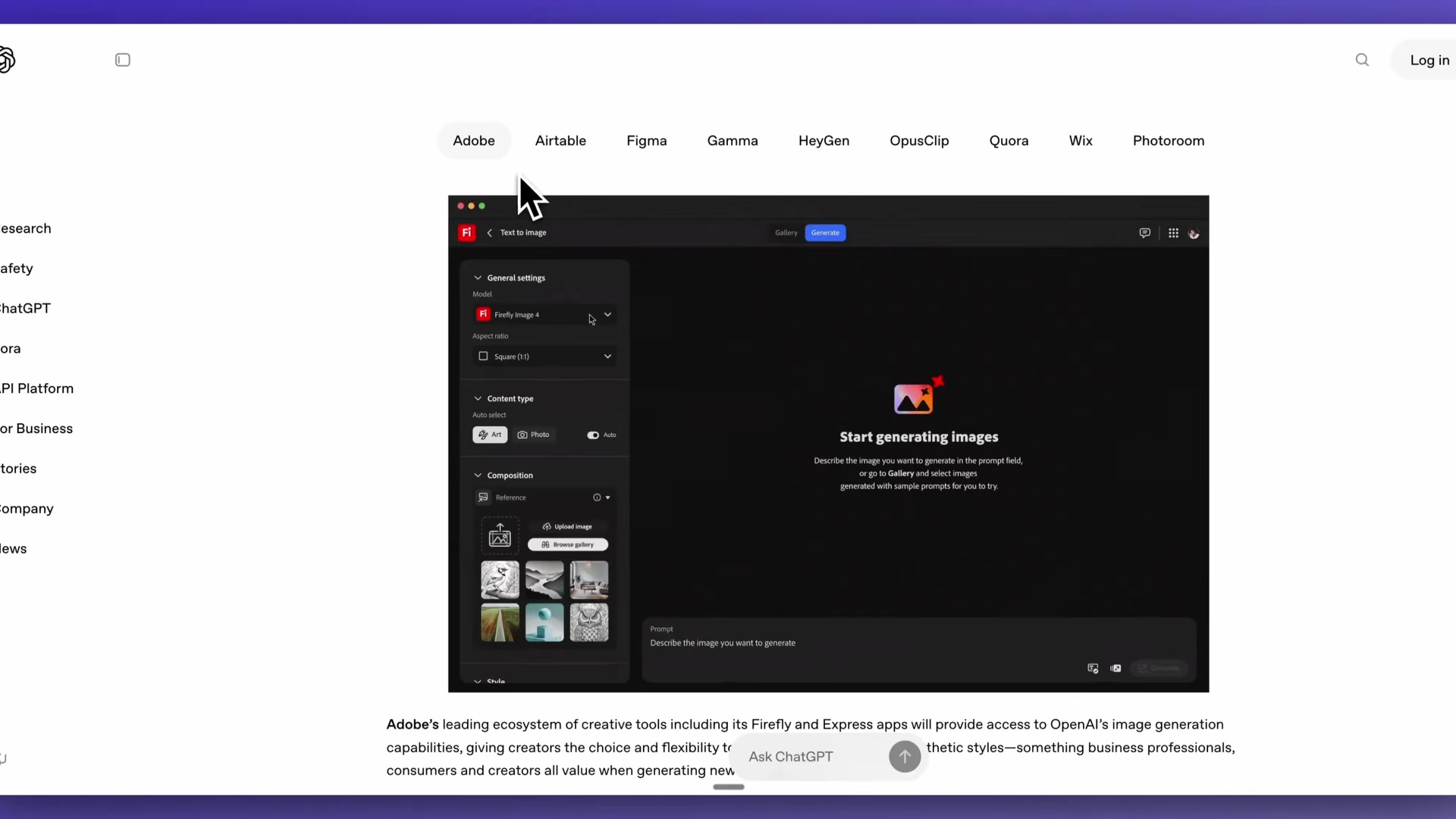
Despite its power, the model has some limitations. Generating images from complex prompts can sometimes take up to two minutes (latency). While text rendering within images has significantly improved compared to previous DALL-E models, the model can still struggle with precise text placement and achieving perfect clarity. Furthermore, maintaining strict visual consistency for recurring characters or specific brand elements across multiple generated images can occasionally be challenging. Despite these points, leading creative tools and platforms like Adobe, Airtable, Figma, and Gamma are already integrating these new image generation capabilities into their products.

While GPT-Image-1 represents a significant step forward in API-driven image generation, developers should remain mindful of potential latency, text rendering nuances, and consistency challenges when building applications.
Experience GPT-Image-1's Excellence Through ChatIMG
Whether you're looking to experiment with GPT-Image-1's image generation capabilities or seeking an easy-to-use platform for creating high-quality AI images, ChatIMG.ai offers the ideal solution. Our platform seamlessly integrates multiple top-tier AI image generation models, including GPT-Image-1, giving you access to cutting-edge technology without writing a single line of code.
With ChatIMG, you can:
- Easily generate high-quality, multi-style images
- Experience the performance differences between GPT-Image-1 and other advanced models
- Enjoy professional-grade image creation without any technical background
- Bring your creative visions to life for personal projects or commercial applications
🎨 Visit ChatIMG.ai today to explore the power of GPT-Image-1! 🎨